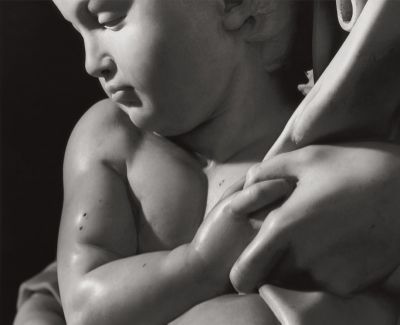I got so lost in the details and troubles of these characters' lives. What was the point of this story? Why are we reading about all these troubles when we each have a gracious plenty of our own? Why wasn't an "escape" reading recommended to take us away from all our life situations?
And then it hit me. The point of the story is exactly that: people trying to escape their life situations through various ways. It was the magnitude of the "various ways" that distracted me. However, an important focus of the story is how easily distracted we are. In my distracted state, I almost missed the beautiful, ironic, unexpected learning situation of one character being pulled from the jaws of death by a pair of jaws!

sculpture by Paul Manship
Then I started paying attention to the author's use of animals in the story and was awakened to the idea of unconditional love demonstrated by these animals. Animals love. Animals love difficult people. Animals love difficult people in difficult situations (Tammy, Dollbaby). Animals love even when love is not returned (Harvey).
The author then, through the characters of Luke and Sadie, shows us how this love looks in the human/human interaction. Even though these humans (Luke and Sadie) have learned this type of love, their lives continue to have rough spots and difficult people. Yet they still chose to love, without waiting for the return of love or even the return of respect. We see Joanna learning this way to deal with life situations i.e., by loving. We see other characters with opportunities to learn this way (Abby, CJ, Stan, Rachel) with varying degrees of success and failure.

sculpture by Gustav Vigeland
The point is that life happens and is going to happen. There is nothing that will change that scenario. The only true escape, or freedom, comes from not running, not avoiding, not controlling, or not expecting the absence of problems. Freedom comes from sitting with life and learning, each moment of each day, to love a little more like Jesus (the perfect love). Since this way of loving is a life- long learning experience, we must wake up to the opportunities and teachers God gives us along the way: a dog (a great example of love) , a Luke or a Sadie ( love in unexpected situations), an Emmaus Group, or even a difficult person. Then, as we keep learning to share our love with all, freedom happens when life happens. It's a mystery. As my friend says, "a beautiful, wonderful mystery.”

detail of Madonna of Bruges by Michelangelo
Glory, be to you, O God,
For the grace of new beginnings
Placed before me in every moment and encounter of life.
Glory, glory, glory
For the grace of new beginnings in every moment of life.
--J. Philip Newell, from “Friday Morning Prayer” in Celtic Benediction
